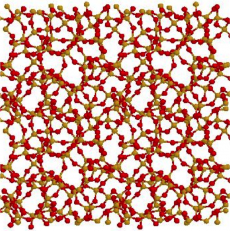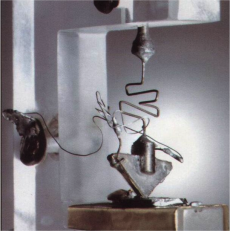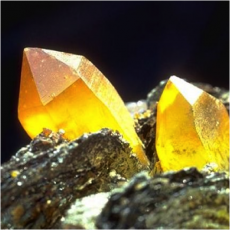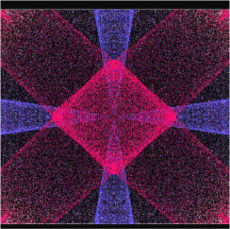Condensed Matter Theory 1 (MVTheoCM1, MVSpec)
Wintersemester 2025/2026
Dozent: Haverkort M
45 Teilnehmer/innen
Dozent: Haverkort M
45 Teilnehmer/innen
Condensed Matter Theory
Condensed Matter Theory I:
The complexity of 1023 particles interacting with each other in a solid give rise to many emergent phenomena one would not predict from the simple interactions between two electrons. In this lecture we will, starting from simple models and theories work our way into the contemporary theory of many particle physics.
The lecture follows for a large part the textbook of Ashcroft and Mermin, with one big difference. The formentioned text-book is based on a text over 50 years old. During the last decades new methods have emerged, often removing the need to know the full wave-function of the system to answer the problem, by using Green's functions. Whenever possible the later will be used within this lecture.
Concepts of many particle systems discused are:
- The Drude Theory of Metals
- The Sommerfeld Theory of Metals
- Electrons in a periodic potential
- Tight binding
- Band-structure, Fermi-surface, Density of states, Metals, Insulators, Semiconductors
- Semiconductor physics
- Surface states
- Phonons and disorder
- Relativistic corrections - spin-orbit coupling
- Phase transitions and topology
- Response functions
Theoretical / Mathematical tools used will be
- Second quantization
- Green's functions (on an independent particle level)
- Self energy (for surface states and disorder)
Levels of theory discussed will be
- Mean-field theory
- Hartree-Fock
- Density functional theory
Materialien
- Condensed_Matter_Theory_1.pdf
Slides of first lecture
- 2025_10_15_Introduction_More_is_different.pptx
Recommended Literature
-
Ashcroft / Mermin
Solid State Physics -
Kittel
Introduction to Solid State Physics -
Mattuck
A guide to Feynman Diagrams in the Many-Body Problem -
E.N. Economou
Green's Functions in Quantum Physics -
MajlisThe Quantum Theory of Magnetism
-
Haken / WolfThe Physics of Atoms and Quanta
-
There is a script that acompanies the lecture. Feedback on content, clearity and typos are most welcome.
Material discussed / schedule
| 13.10.2025 - 18.10.2025 |
Chapter 1 and 2 plus appendix A of the script. Chapter 1 + appendix A: Introduction and repetition of Quantum mechanics and second quantisation. The Hamiltonian of interest for condensed matter systems. Complexity of many electron system and emergent behaviour. Chapter 2: Drude model, Scattering length, Ohms law and Specific Heat |
| 20.10.2025-24.10.2025 | Chapter 3 of the script. Sommerfeld model, Fermi surface, band-structure or energy momentum dispersion and density of states. Solution to the specific heat problem in the Drude model. Scattering time and the probelm of near scattering length: Why do atomic nuclei in a periodic lattice appearently not scatter electrons ? |
| 27.10.2025 - 31.10.2025 | Chapter 5 (and chapter 4 + appendix B briefly) of the script. Periodic potentials, Bloch states, Bloch's theorm, crystal momentum. (Real and reciprocal lattice vectors) -- I assume this chapter is a repetition of lectures you heard before |
| 3.11.2025 - 8.11.2025 | Chapter 6 of the script. Mean-field methods. A short overview of different mean-field theories used to obtain effective potentials from interacting Hamiltonians |
| 10.11.2025 - 14.11.2025 | Chapter 7 of the script. Tight binding theory. Dual nature of Tight binding model and free electron model. Sign of hopping integrals, angular dependence of hopping integrals. Tight binding description of free electron bands. |
| 17.11.2025 - 21.11.2025 | Chapter 7 and 8 of the script. Wannier functions, band character and partial density of states + Definitions of Green's functions frequency and time doman and relation to band-structure. |
| 24.11.2025 -28.11.2025 | Chapter 8 of the script. Green's functions. Impurity scattering - Become fluent in working with Green's functions. |
| 1.12.2025 - 5.12.2025 | Finish chapter 8. Chapter 9 of the script. Self energy due to disorder. |
| 8.12.2025 - 12.12.2025 | Chapter 11 of the script, Surface states |
| 15.12.2025 - 19.12.2025 | Finish Chpater 11 and Chapter 12 of the script, Relativisitc effect. (Single lecture for chapter 12, no part of the exam). |
| 5.01.2026 - 9.01.2026 | Chapter 13 of the script, Phase transitions. - Topological states and surface states - |
| 12.01.2026 - 16.01.2026 | Chapter 14 - Response theory |
| 19.01.2026 - 23.01.2026 | Chapter 14 - Response theory |
| 26.01.2026 - 30.01.2026 | Chapter 14 - Response theory |
| 04.02.2024 | 9:15 - 12:00 Exam gHS Phil 12. Please register via HeiCO |
Tutorials
| 27.10.2025 | problem 1 |
| 3.11.2025 | problem 2 |
| 10.11.2025 | problem 3 1-5 |
| 17.11.2025 | problem 3 6-10 |
| 24.11.2025 | problem 4 |
| 1.12.2025 | problem 5 |
| 8.12.2025 | problem 6 |
| 15.12.2025 | problem 7 |
| 12.01.2026 | problem 8 |
| 19.01.2026 | problem 9 |
| 26.01.2026 | problem 10 |
Übungsblätter
- 27.10.2025
- 3.11.2025
- 10.11.2025
- 17.11.2025
Übungsgruppen
- Gruppe 1
41 Teilnehmer/innen
Phil 19 EG.010, Mo 09:15 - 11:00
Schedule / start
- 1st lelcture on Wednesday the 15th of October 9:15 - 11:00
- 2nd lectrue on Friday the 17th of October 9:15 - 11:00
- 3rd lecture on Monday the 20th of October 9:15 - 11:00
- ...
- 1st tutorial on Monday the 27th of Ocober 9:15 - 11:00
SCHEDULE
- The lectures are on Wednesday and Friday from 9:15 to 11:00 in Philosphenweg 19.
- The tutorials are on Monday from 9:15 to 11:00 in Philosophenweg 19.
- The first lecture is on Wednesday the 15th.
- The first tutorial is on Monday the 27th.
- On Monday the 20th we have a lecture from 9:15 to 11:00
The lecuteres are in person. You can find Youtube videos of the lecures made during the corona shutdown time. These can be used when you miss a lecture. I would however highly recommend to visit the lecutres and tutorials and practice, whithout the (extensive) use of ChatGPT.











